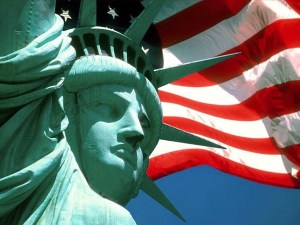 Experience 400 years of New York City history in this one-day walking tour of Lower Manhattan, including museums, parks, a carousel, the chance to spend time with the world’s most famous woman, and trace your family’s roots.
Experience 400 years of New York City history in this one-day walking tour of Lower Manhattan, including museums, parks, a carousel, the chance to spend time with the world’s most famous woman, and trace your family’s roots.
This is one of several one-day family-friendly itineraries from NYC on the Cheap, focusing on FREE, budget-friendly and family-friendly things to see and do in the greatest city on the planet.
Lower Manhattan is where New York City began
Dutch settlers founded the community of New Netherland in the early 1600s, later changing the name to New Amsterdam. The name was changed again, to New York, when the British captured the valuable port city from the Dutch.
Original Dutch street names here include Coenties Slip and Broadway, named for the broad north-south trail through Manhattan Island that followed the route of a Native American trading path.
Stone Street is the oldest paved street in NYC, paved with cobblestones that were ballast for ships that would return to Europe heavy with the bounty local farms and from further north, in the Hudson Valley. Stone Street is a a pedestrian-only street lined with outdoor dining from restaurants housed in historic buildings.
George Washington took the oath of office as first president in the 1700s, when NYC was the capital city of the new USA, before the capital moved to Philadelphia, then Washington, DC. That site is now Federal Hall National Monument, part of National Park System.
See Also
George Washington’s New York City
The Stock Exchange was born here in the 1800s, when a group of financial entrepeneurs made an agreement under a Cottonwood tree.
The Statue of Liberty, donated by the people of France, became a world symbol of freedom and liberty.
Ellis Island is where millions of immigrants landed before settling in New York City or beyond.
F. W Woolworth built what was briefly the tallest skyscraper in the world in the 1900s.
The Twin Towers once stood here, and their destruction on September 11, 2001 changed us and changed the world.
As we said earlier, there’s 400 years of NYC history in an area compact enough to tour in a day.
See Also
Restaurants with Outdoor Dining in Lower Manhattan
Lower Manhattan walking tour
Lower Manhattan is a busy commercial and financial area, much of it with narrow streets from the Dutch grid designed for horse and wagon, not delivery trucks, so walking is the best way to get around.
Set aside a half-day walking around here, a full day or more if you’ll be visiting the Statue of Liberty, Ellis Island and other museums.
Battery Park
Start at Battery Park at Manhattan’s southernmost tip.
It’s named for the circular battery built to protect the city from a British invasion in the War of 1812.
These days, it’s the Castle Clinton National Monument, with historic military displays. This is where to buy tickets to the Statue of Liberty and Ellis Island, unless you already purchased them online.
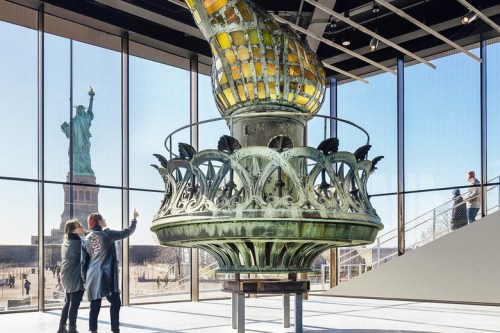 This is where to buy tickets to the Statue of Liberty and Ellis Island, unless you already purchased them online.
This is where to buy tickets to the Statue of Liberty and Ellis Island, unless you already purchased them online.
The new museum at the Statue of Liberty opened Summer 2019, and it is spectacular, an airy glass-walled display of artifacts including the original torch.
Or simply great close-up views of Lady Liberty on the Staten Island Ferry, which is FREE. Please avoid the morning and afternoon commuting times, when it is crucial transportation for people who live on one island and work on the other.
Note that the Staten Island Ferry does not stop at the the Statue of Liberty or Ellis Island.
WARNING -
Do not be scammed by the hustlers selling bogus tickets to Lady Liberty and Ellis Island. Purchase tickets ONLY online from Statue Cruises or at the kiosk at Castle Clinton.
Before leaving Battery Park, check out the SeaGlass Carousel, a magical ride designed like an underwater garden.
You sit inside plexiglass fish, which spin and change color, and the music is soothing and relaxing, not calliope energizing.
Lower Manhattan Museums
One block west, pop into the Museum of Jewish Heritage – A Living Memorial to the Holocaust, which also has a lovely little garden overlooking the Hudson River and the Statue of Liberty.
One block further, the small but satisfying Skyscraper Museum chronicles the world’s tallest buildings and their impact on local communities. With its small $3 admission fee, it’s one of the best museum bargains in New York.
Practically next door, the Smithsonian’s National Museum of the American Indian is filled with artifacts of Native Peoples from the Arctic Circle to Patagonia.
And because it’s part of the Smithsonian, NMAI is FREE admission every day, along with FREE films, storytelling, and performances by Native American dancers and drummers.
NMAI is open weekdays only.
Walk a few blocks north along Broadway to the huge bronze Charging Bull statue by artist Arturo Di Modica, and rub its nose or horns for good luck for yourself, and a “bull market” charging forward for the city and world economy.
Wall Street
The sculpture points to Wall Street, named for the fence, or wall, the Dutch settlers built to protect them from unfriendly natives.
Opposite the famous New York Stock Exchange, George Washington took the oath of office as the first US President of the United States at the Federal Hall National Monument.
His larger-than-life statue is in front, and inside is a small museum about the tumultuous days before and after the founding of this great nation, and National Park Service Rangers give FREE tours.
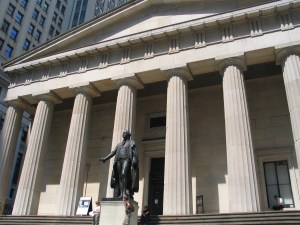 Wall Street is synomous with money. Wanna see lots of it? Had to the Federal Reserve Bank of New York, which holds more than $100 Billion (yes, with a B), and the Museum of American Finance.
Wall Street is synomous with money. Wanna see lots of it? Had to the Federal Reserve Bank of New York, which holds more than $100 Billion (yes, with a B), and the Museum of American Finance.
You can have history for lunch, too. Washington celebrated the British evacuation of New York with his troops in 1783 at Fraunces Tavern.
Or head to Stone Street, said the city’s oldest paved street, closed to traffic for outdoor drinking and dining warm weather months. Harry’s Café and Steak has an underground wine cellar and a Prohibition history, while Ulysses’ Folk House is known for its fresh oysters.
Financial District
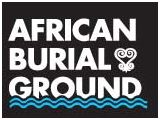 The African Burial Ground National Monument was discovered in 1991 during excavations for a skyscraper, revealing the graves of hundreds of slaves from the 1600s and 1700s.
The African Burial Ground National Monument was discovered in 1991 during excavations for a skyscraper, revealing the graves of hundreds of slaves from the 1600s and 1700s.
It’s a quiet spot for reflection, with a marble rotunda carved with African symbols, including heart-shaped Akoma, representing patience and tolerance.
9/11 Memorial Plaza and Museum
Walk a few blocks along Broadway to the must-see World Trade Center, with its 9/11 Memorial plaza marking the original footprints of the original Twin Towers; the sobering National September 11 Museum; and the sky-high observatory at One World Trade Center.
The World Trade Center stop may very well be your most memorable NYC stop.
Allow at least two hours to see the museum. It’s official name is the National September 11 Museum, but most of us call it the 9/11 Museum.
The 9/11 Memorial Plaza is FREE. The museum has an admission fee.
The two waterfalls, ringed with marble slabs engraved with 9/11 victims, are the original footprints of the Twin Towers.
The waterfalls represent our endless tears. The recessed design represents the hole in our hearts.
Leave time for St. Paul’s Chapel, which many First Responders used as a makeshift dormitory. This is also where George Washington worshipped, and his pew is marked.
Walk east to the Seaport Historic District, dating to the 1700s; ‘Superstorm Sandy’ flooded it with 17 feet of water but its restaurants and shops have bounded back.It’s a great place for drinks.
But if you still have energy, walk across the Brooklyn Bridge for picture postcard images of the NYC skyline at sunset.
A version of this itinerary by Evelyn Kanter was pubished by Bindu Trips, where Evelyn Kanter was NYC Editor.
 Evelyn Kanter is a native New Yorker who has written for the NY Times, NY Daily News, NY Post, New York Magazine, and is a former on-air reporter for WCBS Newsradio 88 and WABC-TV Eyewitness News.
Evelyn Kanter is a native New Yorker who has written for the NY Times, NY Daily News, NY Post, New York Magazine, and is a former on-air reporter for WCBS Newsradio 88 and WABC-TV Eyewitness News.
Eveyn Kanter also the author of several NYC and Hudson Valley guidebooks, including my latest, 100 Things to Do in NYC Before You Die.
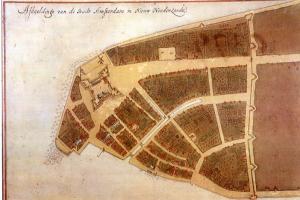
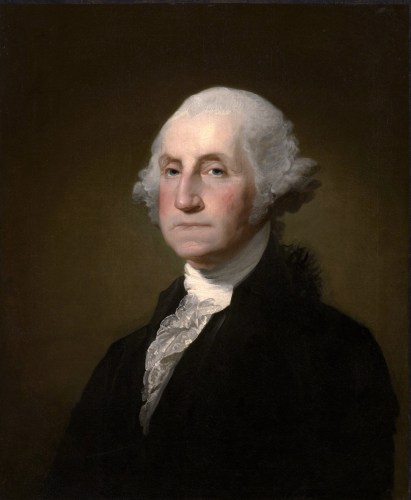

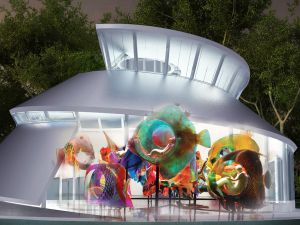


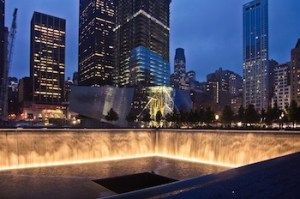
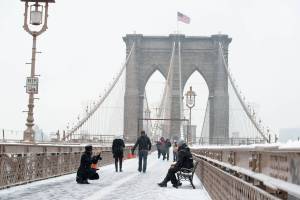

What do you think about this? We welcome your comments.